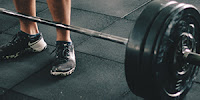Muscular system and types of muscle.
Muscular
Without muscle, humans could not live. The primary job of muscle is to move the bones of the skeleton, but muscles also enable the heart to beat and constitute the walls of other important hollow organs.
There are three types of muscle tissue:
- Skeletal muscle: This type of muscle creates movement in the body. There are more than 600 skeletal muscles, and they makes up about 40 percent of a person’s body weight. When the nervous system signals the muscle to contract, groups of muscles work together to move the skeleton. These signals and movements are nearly involuntary, yet they do require conscious effort. However, humans do not need to concentrate on individual muscles when moving.
- Cardiac muscle: Cardiac muscle is involuntary muscle. This type makes up the walls of the heart and creates the steady, rhythmic pulsing that pumps blood through the body from signals from the brain. This muscle type also creates the electrical impulses that produce the heart’s contractions, but hormones and stimuli from the nervous system can also affect these impulses, such as when your heart rate increases when you’re scared.
- Smooth muscle: Smooth muscle makes up the walls of hollow organs, respiratory passageways, and blood vessels. Its wavelike movements propel things through the bodily system, such as food through your stomach or urine through your bladder. Like cardiac muscle, smooth muscle is involuntary and also contracts in response to stimuli and nerve impulses.
Muscle pain is a common issue that can signal numerous problems, even if it’s something as simple as overuse. Some muscular disorders and conditions that affect muscles include:
- Muscle pain
- Sprains and strains
- Bruising
- Cramping
- Myopathy
- Muscular dystrophy
- Parkinson’s disease
- Fibromyalgia
- Multiple sclerosis
Proper nutrition and exercise is important to keeping all muscles healthy, whether they are cardiac, smooth, or skeletal.

Comments
Post a Comment
PLEASE LEAVE YOUR COMMENTS ..